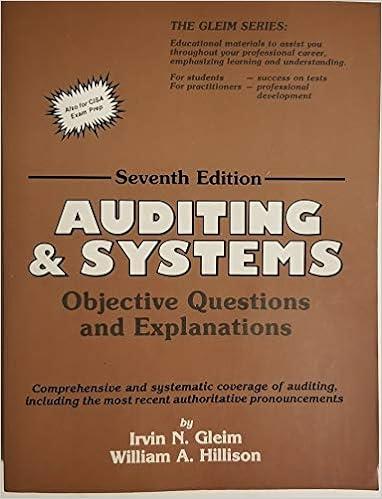Periodic inventory by three methods The units of an item available for sale during the year were as follows: Jan. 1 Inventory 2,500 units at
Periodic inventory by three methods
The units of an item available for sale during the year were as follows:
| Jan. | 1 | | Inventory | 2,500 units at $5 |
| Feb. | 17 | | Purchase | 2,900 units at $6 |
| Jul. | 21 | | Purchase | 3,400 units at $7 |
| Nov. | 23 | | Purchase | 1,200 units at $8 |
There are 1,700 units of the item in the physical inventory at December 31. The periodic inventory system is used. This information has been collected in the Microsoft Excel Online file. Open the spreadsheet, perform the required analysis, and input your answers in the questions below
a. Determine the inventory cost by the first-in, first-out method. Round your answer to the nearest dollar.
b. Determine the inventory cost by the last-in, first-out method. Round your answer to the nearest dollar.
c. Determine the inventory cost by the weighted average cost method. Round your answer to the nearest dollar.

Periodic inventory by three methods The units of an item available for sale during the year were as follows: 2,500 units at $5 Jan 1 Inventory Feb. Purchase 17 2,900 units at $6 Jul. Purchase 3,400 units at $7 21 Purchase 1,200 units at $8 Nov. 23 There are 1,700 units of the item in the physical inventory at December 31. The periodic inventory system is used. This information has been collected in the Micros oft Excel Online file. Open the spreadsheet, perform the required analysis, and input your answers in the questions below. X Open spreadsheet a. Determine the inventory cost by the first-in, first-out method. Round your answer to the nearest dollar. b. Determine the inventory cost by the last-in, first-out method. Round your answer to the nearest dollar. c. Determine the inventory cost by the weighted average cost method. Round your answer to the nearest dollar. Feedback Check My Work a. Note that this exercise uses the periodic inventory system. FIFO means that the first units purchased are assumed to be the first to be sold. Therefore, ending inventory costs for the period are calculated by taking the number of items remaining in the physical inventory times the most recent purchase price. If the number of items in last purchase layer is less than the number in ending inventory, the balance of the ending inventory items must be recorded at the second most recent purchase cost b. Note that this exercise uses the periodic inventory system. LIFO means the last units purchased are assumed to be the first to be sold. Therefore the ending inventory for the period is made up of the earliest costs from the period (the beginning inventory). If the number of units in the ending inventory is greater than the units in the beginning inventory, the excess units will be recorded at the next oldest cost associated with the first purchase c. Note that this problem uses the periodic inventory system. Weighted average cost means the average cost of all available units purchased is applied to the number of units sold and those in ending inventory. Therefore, you must first obtain a unit cost by dividing the total cost of all units available for sale by the number of units available for sale. Then multiply the number of items remaining in the physical inventory times this unit cost. 000







